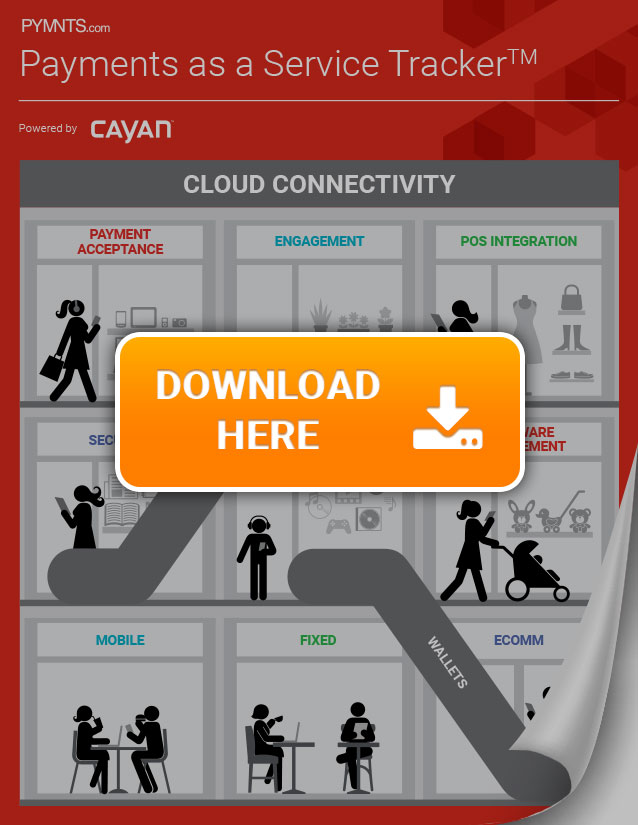If anyone knows the challenges of fusing the next generation of payments offerings together, it’s Henry Helgeson, CEO and Co-Founder of Cayan, a payment technologies provider that integrates and aggregates transaction technology, payment types and customer programs. PYMNTS caught up with Helgeson following his Innovation Project 2016 roundtable to discuss Payments as a Service and the challenges facing the evolution of payments.
The real challenge isn’t online, Helgeson said. “Anybody can make this stuff work online; anybody can make it work in an app.” The challenge, he said, is in-store. “When you actually have to walk into a store and redeem that offer, what happens next?” If a merchant’s POS system doesn’t integrate with mobile payment apps and wallets, for example, and a customer can’t redeem an offer, it’s a negative consumer experience due to a system shortcoming that must be solved. “The loyalty offers, rewards, discounts – that’s what’s next here,” he said, then added that it’s essentially “the secret sauce for all of these merchants to drive consumer behavior.”
In order for payments to evolve, Helgeson said, they need to be extracted from the POS. Alternately, he said, the POS must have the ability to readily work with all types of payments and programs without having to build deep integrations for every single one of them.
One of the challenges are merchants themselves, he said, that are reluctant to scrap or swap out their POS systems. “We have merchants who installed their POS systems 15 years ago and are running billions of dollars a year through it that do not want to change that system. So what we have to do is still enable those systems without breaking that integration,” he said.
Merchants do want to evolve though, he said. Big retail, he pointed out, develop their own apps, which shows a desire, albeit “very narrow.” It’s the SMBs and mid-market merchants who are having the more difficult time adopting technology, mainly because it’s very tough to implement, Helgeson said.
Advertisement: Scroll to Continue
“In the mid-market there’s a strong desire to want to get there,” he said. “There’s a strong desire to better communicate with their customers, to drive purchases through loyalty programs, through offers, through mobile wallet technology – the problem is, they just don’t know how to implement it. You can draw it on a whiteboard and it all sounds great. You can talk to the chief marketing officer and they understand that they want it. The problem is when the CMO throws it over to the CTO, how does it get done? Most of these merchants are running on legacy point of sale systems that are a number of years old and the POS refresh cycle is really slow in the U.S.”
What may drive the implementation of robust payment offerings across industries is current consumer adoption and, in turn, increased expectations of technology itself. Helgeson used Drizly, the technology company powering alcohol delivery via app ordering, as an example. “I can get a beer brought to my house, a lot of times faster than I can get it by standing at a bar,” he explained. Drizly and its brethren apps, he said, are the “types of technologies that are really going to change payments in the way we shop. That’s what we talk about when we talk about driving consumer behavior.”
And with more offerings like Drizly, consumer expectations are shifting. As a result, it may take time, but everything must come together, he said. “You have to know who’s swiping the card in-store and who’s typing it in online. The gift and loyalty programs have to be consistent. The offers have to be consistent,” he said.
One industry where Helgeson sees it coming together, online and offline, is in QSR. The space is conducive to Payments as a Service, he said. “QSR is a lot simpler than physical goods and the reason is there’s no inventory,” he explained. For example, he said, “Starbucks knows they’re not going to run out of coffee.”
Coffee, he said, is a lot easier than attempting to carry a huge inventory for physical products. “You get into specialty retail and fashion, if you want a pair of Nike high tops, size 11-and-a-half, men’s, in red – that’s a much more challenging scenario than, ‘I want a coffee,’” he explained.
But just because it’s difficult doesn’t mean it’s impossible — and Helgeson thinks the focus now should be with (or without) the POS. “The name of the game right now is enablement at the point of sale. If you can’t do that, and you don’t know how to do that without severely disrupting the merchants, it’s going to be a tough road to getting all of this stuff implemented.”
……………..
To download the March edition of the PYMNTS.com Payments as a Service Tracker™, click the button below.

About the Tracker
The PYMNTS.com Payments as a Service Tracker™, in collaboration with Cayan, is a monthly report designed to give an overview of the trends and activities of merchant platforms that not only enable payment processing of new and old technologies, but that also integrates with other features that make the merchant’s experience easier, such as customer engagement, security, omnichannel retail experience, analytics, inventory management, software and hardware management, and more.
The tracker also includes the latest news and highlights about key players of the Payments as a Service space, as well as a directory describing key providers and their capabilities and a scoring for each firm.





